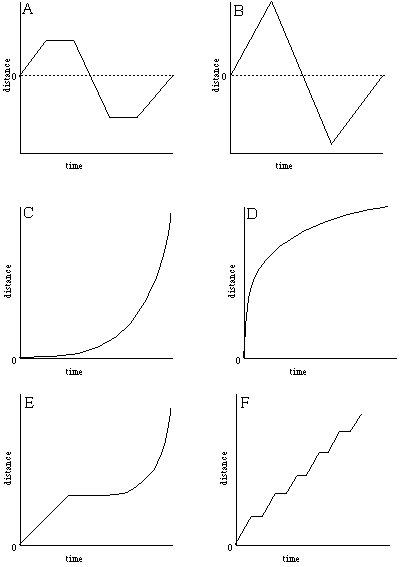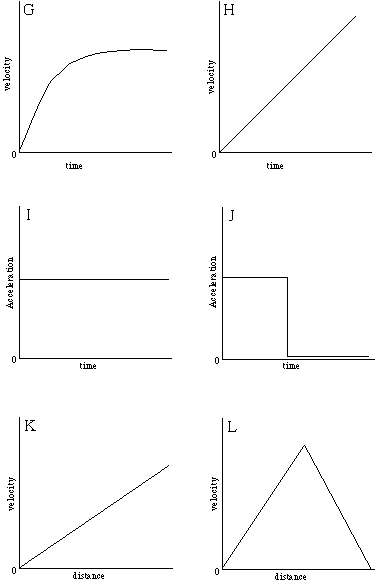Probeware
Introduction
- Probeware Activities (Chapter 22.2)
- Hand temperature (temperture probe)
- Centripetal force - swing (force probe)
- Neutrilization reaction (pH probe)
(1) Motion (distance, velocity, acceleration) - (motion detector probe)
Examine each of the graphs below. Picture in your mind the motion that is being described, and then walk in such a way that the position, velocity, or acceleration of your body is reflected in the graph. Use the ultrasonic motion detector to analyze your movement and perform a screen capture of each activity. For more information, see related Pasco lab (17-position-match graph)
(2) Free Probeware Resources
(a) Audio analysis
- A computer equipped with a microphone is well designed to study sound. Download an audio analyzer program from download.com (search for oscilloscope or audio frequency analyzer. You may wish to try audacity for Mac). Obtain a picture of a sine wave for two tuning forks with different frequencies. What is the relationship between wavelength and pitch?
(b) Vision analysis
- Run the vision tests and answer the following questions? Do the tests indicate any of the following: macular degeneration, protanopia, deuteranopia, red-green color blindness, problems with the pupil or focusing of one or both eyes that cause glare or blur, problems with the detection of the image by the retina or its transmission to the brain through the optic nerve that cause smudges in the field of vision, or problems with the brain in its attempt to combine the images from the two eyes into one image with depth perception?
- Include a screen shot of an optical illusion that you may be able to use in your classroom, and explain how you would use it.
(c) Response time & time estimation
- Is your response time faster with audio or visual stimuli?
- How good is your estimate of time? What is your relative error for an estimate of 30 seconds ? RE= [(observed - actual)/(actual)]x100%
(3) Specific Heat of an unknown metal - (temperature probe)
Measure the specific heat of a metal object and identity the metal based on its specific
heat. Include all graphs and calculations.
- Pasco 20 Specific Heat of an Unknown Metal
- Pasco 3 Energy Content of Food
(4) Simple Harmonic Motion - (motion detector)
The purpose of this activity is to determine how the mass and length of a pendulum affect the
oscillation period of the pendulum.
- Pasco 13 Simple Harmonic Motion–Pendulum
(5) Inverse Square Law - (light sensor, magnetic sensor)
- Pasco 24 Not your typical recirprocal
Illustrate the inverse square law for illuminance using light probes, or the inverse square law for magnetic interaction using the magnetic sensor probes. Remember that ambient light and magnetic fields will influence your results.
Illuminance: ( E=illuminance; I= intensity of source; D=distance)
Magnetic force (M1 and M2= magnetic pole strengths, D=distance, k=constant)

Include a table and graph of your data and briefly discuss your results.
(6) Design your own experiment with probeware
Perform an experiment using one or more of the following probeware modules. Describe the experiment and its results, and include pictures of your data. (Direct-connect temperature probe, Standard Temperature probe, Quick-Response Temperature Probe, pH Amplifier, pH electrode, pressure sensor, colorimeter, thermocouple, light sensor, magnetic field sensor, barometer, relative humidity sensor, heart rate monitor, student force sensor, voltage measurement leads, ultrasonic motion detector, force probe, radiation monitor.)
Experiment ideas: Simple harmonic motion of a pendulum or spring (force probe), analysis of the monitor refresh rate (light probe), effect of exercise upon pulse rate (hear rate monitor), Charles law (pressure probe), etc.



